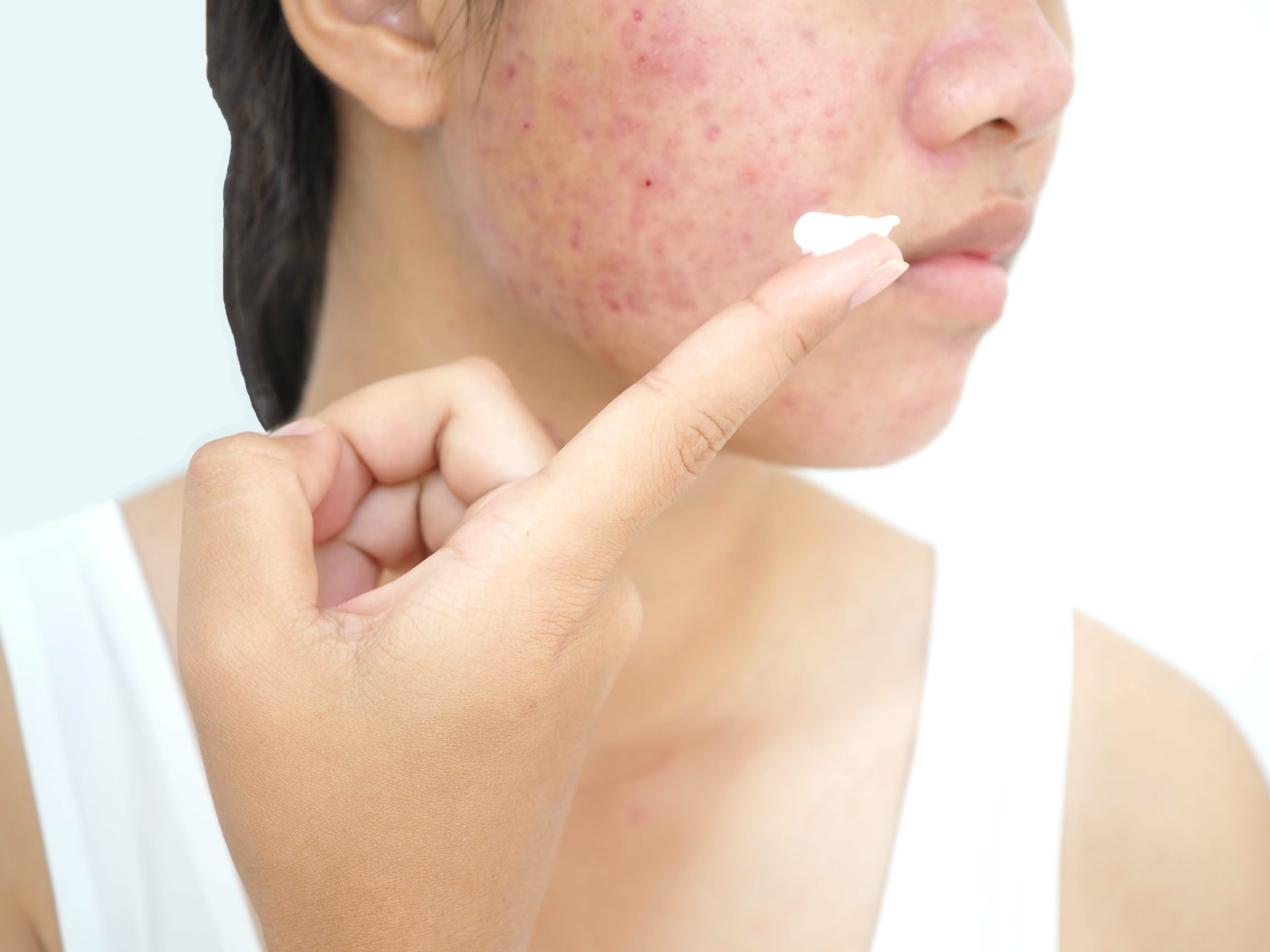- Case-Based Roundtable
- General Dermatology
- Eczema
- Chronic Hand Eczema
- Alopecia
- Aesthetics
- Vitiligo
- COVID-19
- Actinic Keratosis
- Precision Medicine and Biologics
- Rare Disease
- Wound Care
- Rosacea
- Psoriasis
- Psoriatic Arthritis
- Atopic Dermatitis
- Melasma
- NP and PA
- Skin Cancer
- Hidradenitis Suppurativa
- Drug Watch
- Pigmentary Disorders
- Acne
- Pediatric Dermatology
- Practice Management
- Prurigo Nodularis
- Buy-and-Bill
News
Video
Advancing Acne Care: New Therapies and Technologies
Key Takeaways
- Sarecycline, a narrow-spectrum oral antibiotic, minimizes gut microbiome disruption while effectively managing moderate to severe inflammatory acne.
- Sub-microbial dosing and extended-release formulations of minocycline and doxycycline target inflammatory drivers in acne and rosacea, protecting the gut microbiome.
Compliance with acne medications remains a challenge, but timely intervention can prevent severe skin damage.
Christopher Bunick, MD, PhD, associate professor of dermatology and translational biomedicine at Yale School of Medicine, recently discussed advancements in acne and rosacea treatments during an interview with Dermatology Times at the 2025 South Beach Symposium in Miami, Florida. As the medical chair of the symposium’s curriculum, Bunick provided insights into innovative therapeutic approaches for inflammatory skin conditions.
One of the primary concerns regarding systemic treatments, such as oral antibiotics for acne, is their impact on the gut microbiome. According to Bunick, "one of the biggest concerns about systemic therapies like oral antibiotics has been how they hurt the gut microbiome." Recent developments have introduced a narrow-spectrum oral antibiotic called sarecycline, which minimizes disruption to gut bacteria. "It does a really good job of avoiding hitting the gram-negative bacteria in our gut," he stated, emphasizing its role as a more gut-friendly option for managing moderate to severe inflammatory acne.
Bunick also highlighted the introduction of sub-microbial dosing and extended-release formulations of minocycline and doxycycline, particularly in the treatment of papulopustular rosacea. These formulations enable dermatologists to target the inflammatory drivers of acne and rosacea without excessively disrupting the gut microbiome. "This is a way of also protecting the gut microbiome and not over-killing the bacteria in the gut, but using doses of the tetracycline class antibiotics that target the inflammatory component and drivers of acne and rosacea, as opposed to just a bacterial component," he explained.
Beyond pharmacologic interventions, procedural treatments have gained traction in managing acne. Advanced laser technologies now offer a viable alternative for patients who do not respond to conventional treatments or are unwilling to take oral isotretinoin. These lasers specifically target sebaceous glands, effectively reducing acne severity. "One of the benefits of using advanced lasers that target and destroy these sebaceous glands is that it helps acne, and some of the data shows that these lasers can have efficacy on par with oral isotretinoin," Bunick noted. Additionally, these treatments contribute to post-acne scar improvement, bridging the gap between medical and aesthetic dermatology.
Bunick also addressed a common misconception about acne treatment: the tendency of patients to delay seeking medical intervention. "I think a common misconception, particularly on this side of patients that are suffering from acne, is that they can delay their treatment and everything will be okay." However, he stressed the importance of early, aggressive treatment to prevent long-term complications such as scarring and pigmentation issues. Compliance with prescribed treatment regimens remains a challenge, but timely intervention can significantly mitigate lasting skin damage.
Overall, advancements in both systemic and procedural acne treatments continue to improve patient outcomes. By integrating medical and aesthetic approaches, dermatologists can offer comprehensive care that not only clears active acne but also enhances overall skin health and patient confidence. Bunick’s insights underscore the importance of personalized, evidence-based treatment strategies in modern dermatologic practice.






